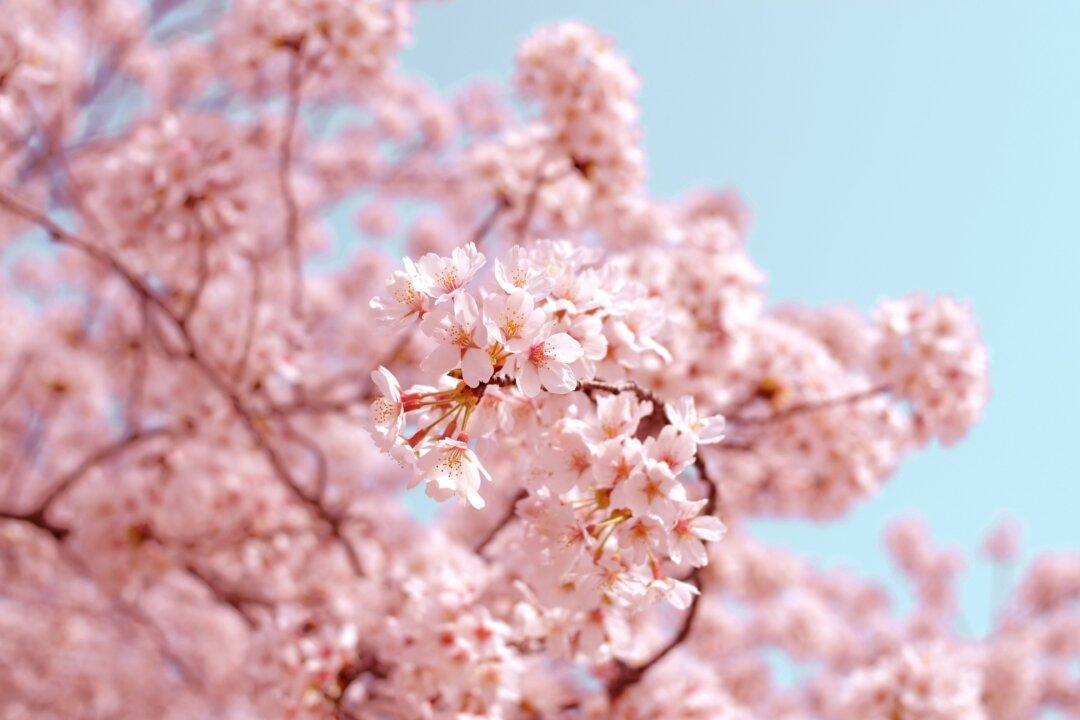While at an art museum housing a collection of Japanese arms and armor, I was fascinated to discover that many of them were adorned with beautiful flowers. On everything from daggers to samurai swords and helmets to breastplates, the beautiful sakura (cherry) blossom was making an appearance.
While arms and armor exhibits aren’t normally my thing, the designs on these drew me in. I found butterflies and locusts, too.
But why was there such a proliferation of sakura flowers, in particular?
You may think you don’t know the sakura, but you likely do. These pink, five-petaled flowers adorn many Asian objects, especially Japanese ones.
But more importantly, they are the cherry blossoms of Washington fame. These cherry trees were a gift from the mayor of Tokyo in 1912 as a symbol of the growing closeness between the United States and Japan at the time.
My friends from China and Taiwan also have a penchant for plum blossoms. You may have seen silk plum blossom branches in the homes of Asian families or at Asian restaurants or hotels. The national song of Taiwan is even called “Plum Blossom.”
There’s a beautiful, profound story here. Sakura flowers on Japanese armor and plum blossoms as the symbol of Taiwan—what do these have in common? The answer is resilience.
These flowers embody a highly esteemed traditional value: the ability to gracefully endure the hardship of cold and snow, symbolizing inner strength.
An American parallel is the bulb flowers that push up through the snow and remind us of new life and resurrection, especially since they emerge from a seemingly dead brown ball in dormant earth. Daffodils, tulips, and hyacinths also offer reassurance because of their heartiness and reliability in blooming year after year. (Except when the squirrels dig them up!)
An ancient Japanese warrior emblazoned with sakura would have been subtly reminded of his strength. Taiwan’s “Plum Blossom” song celebrates the resilience of the democratic little stronghold perched in the South China Sea.
To the samurai, the blossoms served as a reminder of both the warriors’ inner strength and the transience of life, as cherry blossoms fade quickly. The life of a samurai was not expected to be long. Yet a sakura on his armor and arms was a symbol of honor, showing that he was a part of the samurai class and adhered to their code. Called “bushido,” their code naturally emphasized courage and a martial spirit. Frugality, honesty, integrity, and kindness were also highly regarded in the bushido.
The plum blossom is the Taiwanese national flower. Designated as such in 1964, it is said that—in addition to the flower’s symbolism described above—the physical components of the flower itself have meaning. The three stamens represent the “Three Principles of the People” developed by Sun Yat-sen, the leader of the Chinese Nationalist Party. The five petals symbolize the five branches of the Taiwanese federal government. There are many more descriptions of what the flower’s components represent, and even its shadow has symbolism ascribed to it.
You’ll find the plum blossom on many Taiwanese things, including China Airlines airplanes (China Airlines is a Taiwanese company), the Taiwanese Olympic flag, and—if you are influential enough to come across this during daily business dealings—the seal of the office of the president of Taiwan.
While there is much, much more that could be said and researched about the cherry and plum blossoms and their symbolism, I was grateful to recently have the opportunity to understand a little bit more about the patterns—both symbolic (valuing hardiness) and aesthetic (the flower)—that I had been observing in Asian objects for quite some time.
I hope that these insights enrich your own world too and that the resilient flowers that bloom year after year—whether they be on trees, on shrubs, or from the ground—give you some reassurance during trying times.






